Surviving the bullring for a comfy retirement
- Published
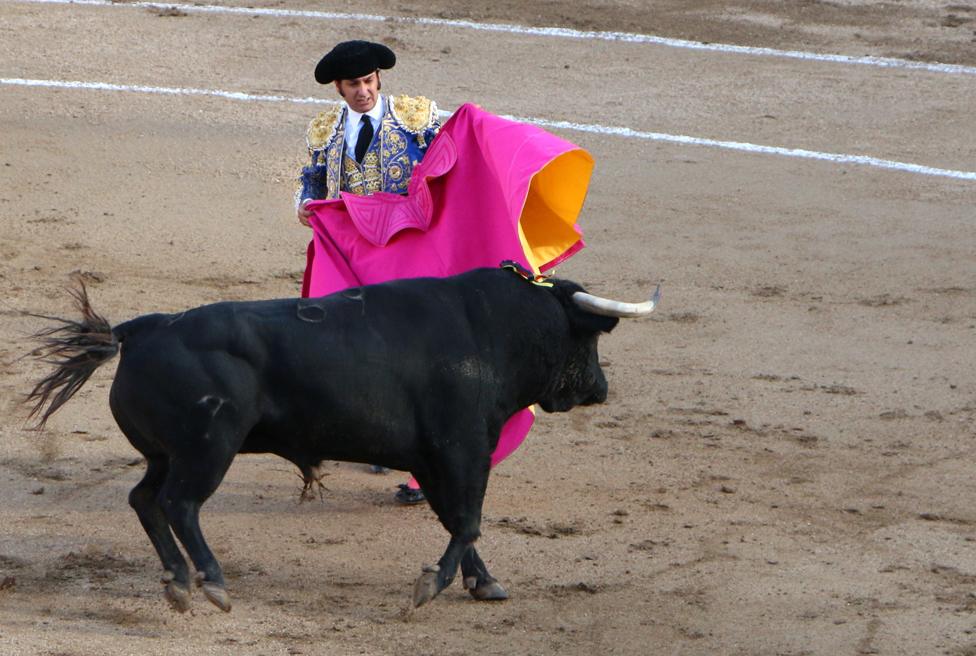
Thousands of bulls are sent into the ring in Spain each year. Most are killed but a handful are spared, and although they may not fight again, these animals remain part of the bullfighting industry.
There are bulls and there are bulls. When the crowd thinks the animal is particularly "brave", and has fought so well it deserves to live, it petitions the president of the bullfight by cheering and waving white handkerchiefs and he makes the final life-or-death call.
I meet some of these bulls grazing among oak trees in the foothills of Spain's central mountains. I ask the rancher, a former matador named Alberto Revesado, what it is like when one of them is spared. He pushes up his sleeve, raises his arm and shows me goose bumps.
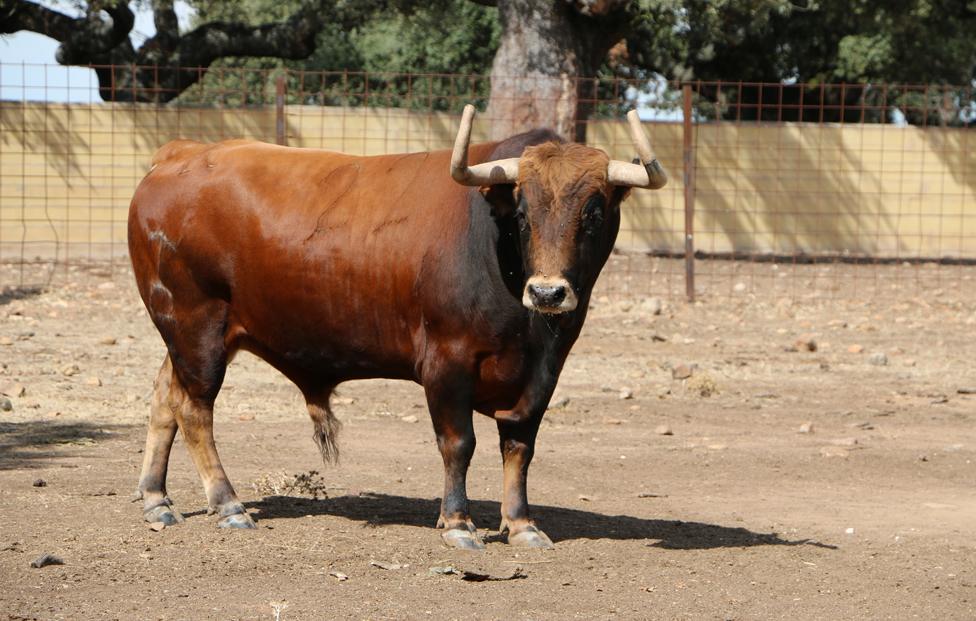
It is something special. These animals have, in a way, passed through death, and into a life full of fresh air, good food and lots of sex.
Antonio is using the bulls as studs. His operation is a side of bullfighting few people see. The focus is usually on the ring, specifically the point of death which even aficionados will admit can be very difficult to watch. But they will also tell you that that moment can be elevating, when the wit of man defeats the brawn of the bull in a single thrust of a sword.
It all depends on the skill of the matador and the bravery of the bull. And it's that bravery that Antonio is trying to perfect.
"I always attend the fights," he says. "I'm like a cook making sure the recipe and ingredients are just right."
A brave bull, of course, is only half the recipe. The cows too must be brave. He says the offspring of two such animals is more likely to perform well in the ring.
"How do you test bravery in a cow," I ask?
"You trace the lineage," he says. His come from a line of fighters dating back to the 1950s - and he trains them like bulls in the ring to keep them fit.
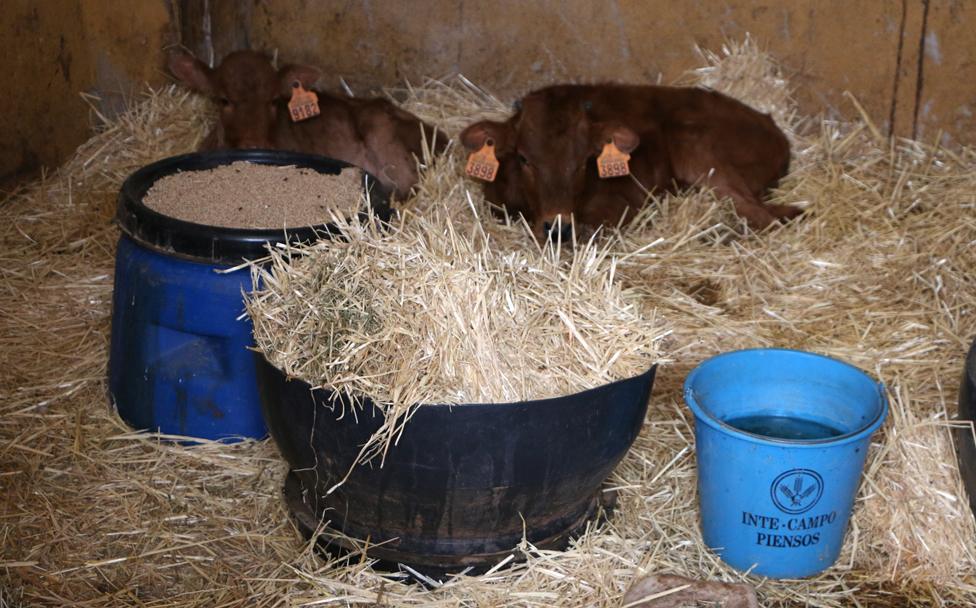
"So this place is like hoof camp," I say. But it is lost in translation. He carries on: "You're looking for passion, commitment, endurance and aggression." And, as if on cue, two animals in an adjoining field begin to fight.
Antonio keeps 200 bulls and 400 cows. He says he'd give his life for any one of them, and after two hours driving around his ranch, I start to believe him.
He shows me the dry hay that is holding them over until the autumn rains turn the dusty ground to meadow, the sheaths on their horns to stop them from hurting each other, and the vet's surgery where they go when they're sick.
He and his brother started this ranch 12 years ago with a bohemian notion of devoting their lives to something they love. "It's not about money," he says - which is a good thing, because they're not making any.
Spain's economic crisis has put the squeeze on ranchers - the number of bullfights fell by a third between 2010 and 2014 - and even put some ranchers out of business. Antonio survives by raising beef cattle as well, and ploughing the profits from them back into the bulls.
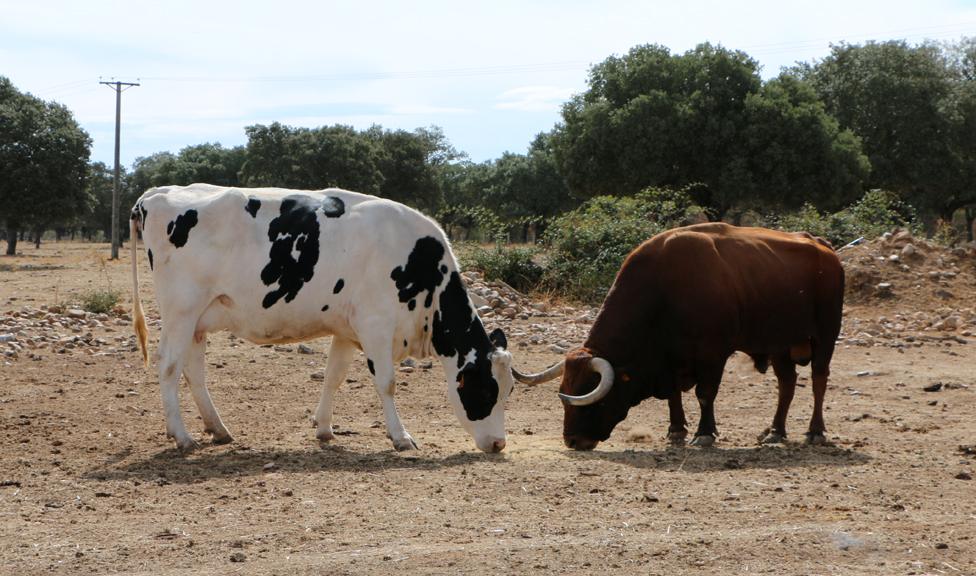
A cow and a bull at the stud farm
The economy has begun to turn around, but bullfighting is facing a new challenge. Animal rights activists and their allies did well in local elections earlier this year. They're promising to stop public funding for bullfighting. The exact sums are disputed - fans say bullfighting generates jobs and tax revenue - but public cash is clearly important. Spain's national minister in charge of bullfighting, Fernando Benzo, tells me, "It is a problem. You cut the money, you don't have bullfights. I have to admit that."
He says he has no power to tell local governments how to spend their money, but he's confident the tradition, like Antonio's studs, will survive. Certainly, animal rights activists haven't won everywhere, and in one place a bullfighting ban has even been overturned. The tradition is not yet on its last legs.
Antonio - a breeder who by necessity takes a long view - admits bullfighting has an expiry date. But standing in the shade of one of his ancient oaks, he says, "What I say to those who oppose bullfighting is, 'Don't worry. It will end someday, but you won't see it, nor will your sons, nor your grandsons.'"

Prize bull
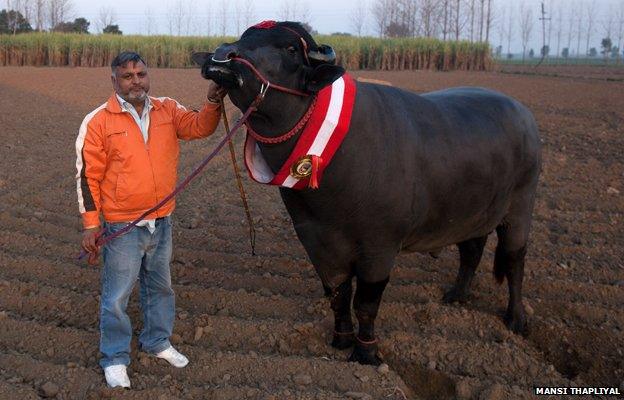
Yuvraj is a handsome animal with oiled backward-curving horns, a smooth grey-black coat and a slim, bushy tail. He's a Murrah bull - the best of the 13 recognised buffalo breeds in India - and a cash cow if ever there was one.
His semen is now possibly the most expensive in India, costing up to 350 rupees ($5.65; £3.75) a dose. A single ejaculation, provides 500 to 600 sperm "doses", and his owner earns anything between 3m and 5m rupees ($46,000 to $77,000) every year selling the stuff.

How to listen to From Our Own Correspondent, external:
BBC Radio 4: Saturdays at 11:30. Listen online or download the podcast.
BBC World Service: At weekends - see World Service programme schedule or listen online.
Subscribe to the BBC News Magazine's email newsletter, external to get articles sent to your inbox.